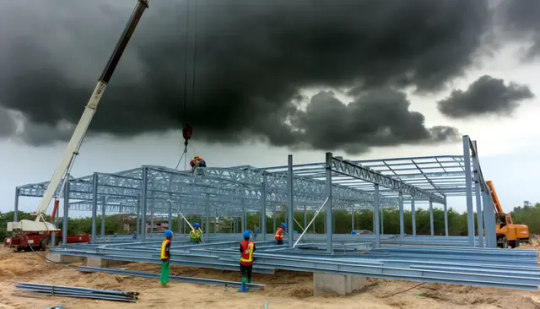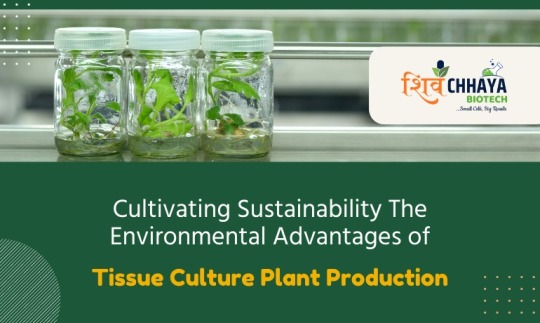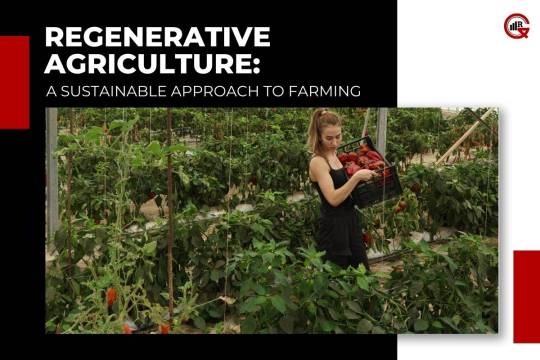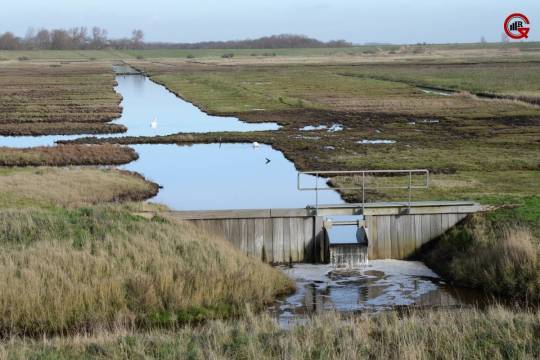#Climateresilience
Text
2 notes
·
View notes
Text
Mission Mausam || भारत सरकार की योजना मिशन मौसम || 2000 करोड़ रुपये मंजूर किए #MissionMausam

देश का मौसम बदलने वाला है, और इसका रिमोट कंट्रोल भारतीय वैज्ञानिकों के हाथ में होगा! क्या हो अगर आपके पास एक ऐसा रिमोट हो, जिससे बारिश और तूफान को कंट्रोल किया जा सके? सुनने में अजीब लग सकता है, लेकिन भारत सरकार ने "मिशन मौसम" नामक एक क्रांतिकारी योजना की शुरुआत की है, जिसके लिए 2000 करोड़ रुपये मंजूर किए गए हैं। इस योजना का उद्देश्य मौसम संबंधी आपदाओं जैसे बाढ़, सूखा, और ओला-वृष्टि को नियंत्रित कर कृषि, आपदा प्रबंधन, डिफेंस, एविएशन, ऊर्जा, और टूरिज्म जैसे क्षेत्रों को लाभ पहुंचाना है।
youtube
#मिशन_मौसम#मौसम_पर_नियंत्रण#MissionMausam#WeatherControl#IndiaClimatePlan#ArtificialRain#WeatherModification#ClimateSmart#ModiGovernment#AgricultureRevolution#DisasterManagement#CloudSeeding#AIWeatherPrediction#SustainableFuture#IndiaScience#ClimateResilience#Youtube
0 notes
Text
0 notes
Text
Explore reforestation projects that offer solutions for greening the earth and enhancing climate resilience.
0 notes
Text
0 notes
Text
Zero Tillage in Wheat: A Cost-Effective Practice that Enhances Soil Health
In Uttar Pradesh's Mau Aima block, the Bolstering FPOs project, supported by Walmart Foundation and S M Sehgal Foundation, introduces zero tillage wheat cultivation, enhancing climate resilience and profits for small farmers.
#zerotillageinwheat#soilhealth#climateresilience#profitsforsmallfarmers#smsfoundation#WalmartFoundation
0 notes
Text
HOW CAN SOLUTIONS FROM PEB MANUFACTURERS MITIGATE MONSOON-RELATED DISASTERS?
It’s not a surprise that India has diverse climatic conditions. Because of these weather extremities, our nation is also not a stranger to the intense and destructive monsoon season conditions.

Undoubtedly, the rainy season is vital for agriculture. However, it also brings severe issues like flooding, landslides, and cyclones, which ultimately cause rampant damage and loss of life.
While climate change is an essential reason for the recent weather pattern, one must recognize how our obsolete construction techniques further exaggerate the problem. Due to this, the demand for pre-engineered buildings (PEBs) has been rising lately.
PEB manufacturers register multiple orders every day because these structures have shown their advantage across different necessities, including monsoon readiness. These are robust, versatile, and long-term cost-saving structures that enhance community resilience and the durability of infrastructure against such disasters.
Pre-Engineered Building Structures Can Enhance Early Warning Systems
One of the critical aspects of disaster management is establishing early warning systems. PEBs can play a vital role in this regard. Pre-engineered structures can be rapidly deployed to house weather monitoring and communication equipment, ensuring that remote and vulnerable areas receive timely alerts. These installations can withstand harsh weather conditions, ensuring the continuity of operations even during severe storms. PEB Manufacturers in India can customize these structures, considering the intensity at which a specific region faces floods.
PEB Buildings Are Reliable Community Shelters in Times of Crisis
Monsoons often necessitate the evacuation of communities from flood-prone or landslide-affected areas. Here, PEBs come into their own as efficient and reliable community shelters. These structures can be quickly erected to provide safe and secure housing for displaced populations. Unlike traditional buildings, industrial shed manufacturers and suppliers take a fraction of the time to design these structures. At the same time, these buildings can endure extreme weather, offering protection against heavy rains and high winds.
All Types of PEB Structures Are Resilient
Critical infrastructure resilience is paramount during monsoon seasons. Traditional construction methods often lack the durability and speed required to rebuild or reinforce infrastructure in disaster-prone regions. PEBs, however, offer an ideal solution. Well-known PEB companies like EPACK Prefab make modular designs, which allow for quick assembly. Also, their steel framework provides superior strength and durability. This makes PEBs suitable for constructing resilient bridges, roadways, and utility buildings that can better withstand monsoon impacts.

PEBs Can Protect Lives and Resources in Coastal and Flood Zones
In coastal regions prone to cyclones, PEB structures can be used to build emergency response centers that remain operational during and after storms. PEB building manufacturers can construct elevated storage facilities in flood-affected areas, protecting vital supplies from water damage.
PEBs Vs Traditional Structures: Who Wins?
Traditional structures pale in comparison to pre-engineered building systems when it comes to the range of benefits the latter offers. Here’s a review:
Construction Speed: PEBs have a rapid construction timeline. In disaster scenarios, where time is of the essence, the ability to quickly erect shelters and infrastructure can save lives and resources. The swift assembly is possible because components of a PEB structure are manufactured off-site, then transported to the location, where they are quickly assembled.
Cost-Effectiveness: These structures are generally more cost-effective than traditional building methods over time, as the prefabrication process reduces labor costs and material waste, making PEBs an economical choice for disaster management.
Durability and Maintenance: PEBs require minimal maintenance compared to conventional structures. Their steel components resist corrosion, pests, and mold, ensuring long-term durability even in harsh monsoon climates.
Flexibility and Scalability: Such buildings can be easily modified or expanded to meet changing needs. This flexibility is crucial in disaster-prone areas where the demand for shelters and infrastructure can vary significantly.
PEBs emerge as a clear winner, offering a versatile and efficient solution to disaster management’s unique challenges. Their unmatched combination of speed, affordability, durability, and adaptability makes them a game-changer in disaster preparedness and recovery efforts.
Get in Touch with Pre-Engineered Building Manufacturers Today!
Flash floods and other monsoon-related disasters are rising in intensity every year. Shifting to pre-engineered buildings is a promising solution that can help create infrastructure that lasts longer and make our community more resilient.
From early warning systems to community shelters and resilient infrastructure, PEBs provide versatile, cost-effective, and robust options that traditional building methods often cannot match.
As one of the best PEB manufacturers in India, we at EPACK Prefab are committed to leveraging the potential of prefabricated solutions to safeguard communities and infrastructures against the adverse effects of monsoon seasons.
Curious to know more about how PEB works? Check out our blog section, which explains how PEB is changing the face of infrastructure. To find out how we have established PEB-based resilient structures, kindly check out EPACK Prefab projects, where we’ve displayed our innovative solutions.
Also Read: ESSENTIAL PRE-MONSOON CHECKLIST FOR PRE-ENGINEERED BUILDINGS (PEB)
#Tags: PreEngineeredBuildings#PEB#MonsoonPreparedness#DisasterManagement#ClimateResilience#FloodProtection#CycloneSafety#PrefabStructures#EPACKPrefab#SustainableConstruction#RapidConstruction#CommunityShelters#InfrastructureSafety#ConstructionInnovation#WeatherResistantBuildings
0 notes
Text

The Advantages of Wire Rope Net Houses for Sustainable Agriculture
Discover the benefits of Wire Rope Net Houses (WRNH) for sustainable agriculture. Learn how Vatshal Green Environment offers cost-effective solutions for crop protection.
Contact us at +91 78743 79887, +91 75677 79887, or
visit: https://bit.ly/3zm7tnv
#WRNH#SustainableAgriculture#CropProtection#AgTech#GreenTechnology#EnvironmentalProtection#FarmInnovation#ClimateResilience#PrecisionFarming#VatshalGreen
0 notes
Video
youtube
Breaking Down Silos: Collaborative Floodplain Restoration | Nature Is ep...
#youtube#EnvironmentalJustice#PacificNorthwest#WashingtonState#IndigenousVoices#Collaboration#ClimateResilience#FloodplainRestoration
0 notes
Text
Building Resilient Cities: The Vital Role of Investment Banks in Combating Climate Change
Climate change poses one of the most urgent and complex challenges of our time, with increasingly evident and devastating impacts worldwide. Amidst this challenging scenario, cities emerge as critical points of vulnerability, facing the growing threat of extreme weather events that jeopardize infrastructure, economies, and the well-being of millions of urban dwellers.
In this context, investment banks play a crucial role in constructing more resilient cities prepared to face the challenges of climate change. Through their unique ability to mobilize financial resources, investment expertise, and market influence, these financial institutions play a vital role in promoting innovative and sustainable solutions to ensure a safer and more sustainable urban future.
The Challenge of Urban Climate Resilience
Cities are hubs of economic activity, innovation, and cultural diversity, but they are also vulnerable to the impacts of climate change. Extreme weather events such as floods, droughts, and heatwaves pose significant threats to urban infrastructure, citizen safety, and economic stability. Urban climate resilience, therefore, becomes an essential priority to ensure the sustainability and prosperity of urban areas in an ever-changing world.
The Transformative Role of Investment Banks
Investment banks play a transformative role in building resilient cities, acting as catalysts for strategic and innovative investments. Through financing resilient infrastructure, investment in renewable energy and energy efficiency, development of risk finance instruments, support for adaptive technology development, and promotion of awareness programs, these financial institutions are at the forefront of the fight against climate change.
Tangible Benefits and Positive Impacts
The benefits of investing in urban climate resilience are vast and tangible. Modernizing urban infrastructure, transitioning to clean energy sources, protecting against extreme weather events, and raising awareness among the population about climate challenges are just some of the ways investment banks can contribute to building more resilient and sustainable cities.
Collaboration and Collective Commitment
To achieve the goal of building resilient cities, close collaboration between investment banks, governments, businesses, and local communities is essential. Integrating environmental, social, and governance (ESG) criteria into investment decisions, promoting sustainable practices, and implementing innovative solutions are critical to ensuring the success of urban climate resilience initiatives.
Conclusion: Towards a Sustainable and Resilient Urban Future
In a world marked by increasingly urgent climate challenges, investment banks play a vital role in building resilient cities prepared to face the challenges of the 21st century. By investing in innovative solutions, promoting sustainability, and collaborating with various societal actors, these financial institutions are at the forefront of the fight against climate change, ensuring a safer, more sustainable, and resilient urban future for all.
This article highlights the importance of the role of investment banks in building climate-resilient cities and aims to inspire concrete actions in this direction.
#ResilientCities#ClimateChange#InvestmentBanks#UrbanResilience#SustainableFuture#ClimateAction#InfrastructureInvestment#RenewableEnergy#ClimateResilience#ESGCriteria#Collaboration#ClimateAdaptation#BuildingBetterCities#SustainabilityLeadership
0 notes
Text

𝐒𝐞𝐜𝐮𝐫𝐢𝐧𝐠 𝐇𝐚𝐫𝐯𝐞𝐬𝐭𝐬: 𝐄𝐱𝐩𝐥𝐨𝐫𝐢𝐧𝐠 𝐭𝐡𝐞 𝐂𝐫𝐨𝐩 𝐈𝐧𝐬𝐮𝐫𝐚𝐧𝐜𝐞 𝐌𝐚𝐫𝐤𝐞𝐭
𝐆𝐞𝐭 𝐚 𝐅𝐑𝐄𝐄 𝐒𝐚𝐦𝐩𝐥𝐞: https://www.nextmsc.com/crop-insurance-market/request-sample?utm_source=sanyukta-2-may-24&utm_medium=sanyukta-tumblr&utm_campaign=sanyukta-crop-insurance-market
As the agricultural landscape continues to evolve, the importance of crop insurance cannot be overstated. In an era marked by unpredictable weather patterns, market volatility, and evolving risk factors, crop insurance serves as a vital tool for farmers to safeguard their livelihoods.
The crop insurance market is witnessing significant growth, driven by several factors:
𝟏️. 𝐑𝐢𝐬𝐤 𝐌𝐢𝐭𝐢𝐠𝐚𝐭𝐢𝐨𝐧: With climate change posing new challenges to agricultural productivity, crop insurance offers a safety net against yield losses due to adverse weather conditions, pests, or diseases.
𝟐️. 𝐅𝐢𝐧𝐚𝐧𝐜𝐢𝐚𝐥 𝐒𝐭𝐚𝐛𝐢𝐥𝐢𝐭𝐲: For farmers, crop insurance provides financial stability by minimizing the impact of crop failures or revenue losses. This stability enables them to make strategic decisions regarding crop selection, investment, and expansion.
𝟑️. 𝐆𝐨𝐯𝐞𝐫𝐧𝐦𝐞𝐧𝐭 𝐒𝐮𝐩𝐩𝐨𝐫𝐭: Many governments around the world recognize the importance of crop insurance in ensuring food security and rural development. Subsidies, incentives, and regulatory frameworks are encouraging farmers to invest in insurance coverage.
𝟒️. 𝐓𝐞𝐜𝐡𝐧𝐨𝐥𝐨𝐠𝐢𝐜𝐚𝐥 𝐀𝐝𝐯𝐚𝐧𝐜𝐞𝐦𝐞𝐧𝐭𝐬: The integration of technology, such as satellite imagery, weather data analytics, and machine learning algorithms, is revolutionizing the crop insurance sector. These advancements enable more accurate risk assessment, timely claim processing, and personalized insurance products.
𝟓️. 𝐌𝐚𝐫𝐤𝐞𝐭 𝐄𝐱𝐩𝐚𝐧𝐬𝐢𝐨𝐧: As awareness about the benefits of crop insurance grows, the market is expanding beyond traditional agricultural regions. Emerging economies, in particular, are witnessing a surge in demand for crop insurance as farmers seek to protect their investments and livelihoods.
In this dynamic landscape, stakeholders across the agricultural value chain – insurers, reinsurers, policymakers, and technology providers – play a crucial role in shaping the future of the crop insurance market.
𝐊𝐞𝐲 𝐏𝐥𝐚𝐲𝐞𝐫𝐬: The crop insurance market report includes several market players such as ADM, Sompo Holdings Inc, AXA XL, Chubb Limited, HDFC Ergo, Munich Re Group, Odyssey Group, QBE Insurance Group Limited, Tokio Marine Holdings, Inc, and Zurich Insurance Group. These market players are adopting business expansion strategies across various regions to maintain their dominance in the global agricultural insurance market.
As we navigate through these opportunities and challenges, let's continue to innovate, collaborate, and advocate for resilient agricultural practices and sustainable risk management solutions.
#cropinsurance#agriculture#riskmanagement#insurancemarket#sustainablefarming#foodsecurity#agribusiness#climateresilience#foodservice#marketresearch#markettrends#businessinsights
0 notes
Text
Floodwaters Over Dubai: Confronting Nature's Wrath in the Oasis

View On WordPress
0 notes
Text

Cultivating Sustainability: The Environmental Advantages of Tissue Culture Plant Production
Discover the eco-friendly benefits of tissue culture plants in farming. Learn how this sustainable method promotes environmental conservation.
For more information visit: https://bit.ly/3Jkka3Z
Contact us on: +91 77790 21916
#SustainableCultivation#TissueCultureAdvantages#EnvironmentalBenefits#PlantProduction#GreenTechnology#AgSustainability#EcoFriendlyFarming#CropConservation#BiodiversityPreservation#ClimateResilience
0 notes
Text
Regenerative Agriculture: A Sustainable Approach To Farming

Regenerative agriculture is gaining increasing attention as a sustainable and environmentally friendly approach to farming. Unlike conventional farming practices that focus solely on maximizing yields and profitability, regenerative farming emphasizes soil health, biodiversity, and ecosystem resilience. In this article, we will explore the principles, benefits, challenges, and potential of regenerative agriculture in addressing global food security, climate change, and environmental degradation.
Principles of Regenerative Agriculture:
This type of agriculture is guided by several key principles aimed at restoring and enhancing the health of agroecosystems while minimizing negative environmental impacts. These principles include:
Soil Health: Regenerative agriculture prioritizes the health and vitality of soil as the foundation of agricultural productivity. Practices such as minimal tillage, cover cropping, crop rotation, and composting are employed to improve soil structure, fertility, and microbial activity.
Biodiversity: Diversity is encouraged in both crop and animal species to enhance ecosystem resilience, pest and disease resistance, and nutrient cycling. Polyculture and agroforestry systems are utilized to mimic natural ecosystems and promote biodiversity on farms.

Carbon Sequestration: Regenerative agriculture practices aim to sequester carbon dioxide from the atmosphere and store it in the soil through techniques such as agroforestry, rotational grazing, and the use of cover crops. This helps mitigate climate change by reducing greenhouse gas emissions and enhancing carbon sinks in agricultural landscapes.
Holistic Management: Regenerative farmers adopt holistic management approaches that consider the interconnectedness of soil, plants, animals, and humans within agroecosystems. This holistic approach emphasizes collaboration with nature, adaptive management, and continuous improvement.
Benefits of Regenerative Farming:
Regenerative agriculture offers a range of benefits for farmers, consumers, and the environment, including:
Improved Soil Health: By enhancing soil fertility, structure, and organic matter content, regenerative farming improves soil health and productivity, leading to higher crop yields, reduced erosion, and better water retention.
Increased Biodiversity: Regenerative practices promote biodiversity on farms, supporting pollinators, beneficial insects, and wildlife habitats. Diverse ecosystems are more resilient to pests, diseases, and environmental stresses, reducing the need for synthetic pesticides and fertilizers.
Climate Resilience: Through carbon sequestration and reduced greenhouse gas emissions, regenerative agriculture helps mitigate climate change and build resilience to extreme weather events such as droughts, floods, and heatwaves.
Enhanced Nutritional Quality: Studies have shown that regeneratively grown crops and livestock products may have higher nutritional content, including vitamins, minerals, and antioxidants, compared to conventionally produced foods.
Sustainable Livelihoods: Regenerative agriculture offers economic opportunities for smallholder farmers, rural communities, and indigenous peoples by promoting diversified and locally adapted farming systems, value-added products, and direct marketing channels.
Challenges and Considerations:

While regenerative agriculture holds great promise for sustainable food production, it also faces several challenges and considerations, including:
Knowledge and Education: Adopting regenerative practices requires education, training, and technical assistance for farmers to understand the principles and techniques involved. Extension services, farmer-to-farmer networks, and demonstration projects can help disseminate knowledge and best practices.
Investment and Infrastructure: Transitioning to regenerative farming may require initial investments in equipment, infrastructure, and resources, which can be a barrier for small-scale farmers and resource-limited regions. Access to finance, incentives, and supportive policies can facilitate adoption and investment in regenerative practices.
Market Access and Consumer Awareness: Building market demand for regeneratively produced foods and products requires consumer education, labeling, and certification schemes that communicate the environmental, social, and health benefits of regenerative agriculture. Strengthening local and regional food systems can also improve market access for regenerative farmers.
Policy and Governance: Regulatory frameworks, agricultural policies, and land tenure systems may need to be reformed to incentivize and support regenerative farming practices. Governments can play a crucial role in providing subsidies, incentives, and technical assistance to promote sustainable land management and agroecological farming methods.
Social Equity: Regenerative agriculture emphasizes equitable access to resources, knowledge, and opportunities for all farmers, including smallholders, women, youth, and marginalized communities. By promoting inclusive and participatory decision-making processes, regenerative farming contributes to social cohesion, community empowerment, and rural development.

Ecosystem Services: Regenerative farming practices provide a wide range of ecosystem services, including pollination, water purification, carbon sequestration, and biodiversity conservation. By restoring and enhancing natural habitats, regenerative farming supports ecosystem functions and ecological balance, benefiting both agricultural landscapes and adjacent ecosystems.
Conclusion:
Regenerative agriculture offers a holistic and sustainable approach to farming that prioritizes soil health, biodiversity, and ecosystem resilience. By adopting regenerative practices, farmers can improve agricultural productivity, mitigate climate change, and enhance environmental sustainability while promoting economic livelihoods and food security for future generations. As awareness of the benefits of regenerative farming grows, concerted efforts are needed from stakeholders across the food system to support its widespread adoption and implementation on a global scale.
0 notes
Text
Early Signs of Spring Becoming New Norm and Citizen Scientists Are Needed to Help Monitor Situation Say Woodland Trust

Woodland Trust warns earlier signs of spring becoming the new norm and is asking volunteers to become citizen scientists to help record data. Read more on Hillingdon Today.
#SpringShift #CitizenScience #Citizen #ClimateChange #WoodlandTrust #NatureMonitoring #EcologicalShifts #EarlySpring #VolunteerMonitoring #EnvironmentalAction #ClimateAction #SpringTrends
Read the full article
#Citizenscience#Climateaction#Climatechangeimpact#Climateresilience#CO2emissions#Earlysignsofspring#Ecologicalshifts#Environmentalaction#Naturemonitoring#Springindex#Springphenology#Springtrends#Volunteeropportunities#Wildlifemonitoring#WoodlandTrust
0 notes
Text
Protecting Communities: Urgent Action Needed for Climate Resilience and Sustainable Development
#climateresilience #climaterelateddisasters #sustainabledevelopment #UnitedNationsFrameworkConventiononClimateChange #vulnerablecommunities
#Politics#climateresilience#climaterelateddisasters#sustainabledevelopment#UnitedNationsFrameworkConventiononClimateChange#vulnerablecommunities
0 notes